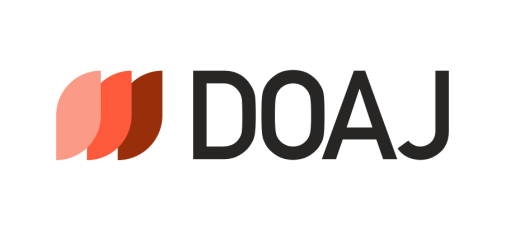Deseminasi Mesin Pewarna Tekstil Untuk Meningkatkan Kuantitas Kain Tenun Ikat Bagi Home Industri di Kota Kediri
Abstract
Eko (Kodok Ngorek Putra), diantara 20 home industri rumah tangga yang memproduksi kain Kain tenun ikat yang terletak di bandar kudul kota kediri yang mengalami kendala dalam proses produksi, yaitu belum efisiennya proses pewarnaannya. Proses pewarnaan tenun dan produksi memakai cara tradisional dengan bantuan manusia dan belum pernah melibatkan proses melalui mesin berbasis teknologi tepat guna, proses pewarnaan dengan teknik sederhana perhari hanya menghasilkan 5 kg benang dengan waktu kurang lebih 6 jam agar proses pewarnaan merata, selain itu proses pewarnaan ini tidak semua orang mempunyai keahlian, sebagai gambaran untuk melayani home industry sebanyak 120 hanya dikerjakan oleh 12 tenaga ahli, sehingga semua home industry belum terfasilitasi secara merata. Jadi semua proses pewarnaan dilaksanakan tanpa bantuan mesin. Tujuan dari kegiatan ini yaitu: (a) menghasilkan mesin pewarna tenun ikat; (b) melakukan pelatihan pengoperasian alatMetode pelaksanaan deseminasi ini dilaksanakan dengan cara desain melakukan tranfer ilmu pengetatuan berupa training singkat dengan demonstrasi dan diskusi terpimpin. Hasil dari pengabdian ini pertama telah menghasilkan mesin pewarna tekstil yang layak digunakan pada proses pewarnaan. Kedua hasil pelatihan yang dilakukan mendapat repon positif masyarakat yang ikut pelatihan dengan hasil tanggapan mitra terhadap kemudahan alat memperoleh presenetase 80%, tanggapan mitra terhadap bimbingan yang diberikan instruktur memperoleh presenetase 90%, tanggapan mitra terhadap isi dan metode bimbingan memperoleh presenetase 90%, tanggapan mitra terhadap pengetahuan/teknik yang telah dikuasai memperoleh presenetase 90%.
Kata kunci— Tekstil, Kain Tenun ikat, Produktivitas
Abstract
Eko (Kodok Ngorek Putra), among 20 home industries that produce ikat fabrics located in Bandar Kudul, Kediri, is experiencing problems in the production process, namely the inefficient coloring process. The dyeing process for weaving and production uses traditional methods with human assistance and has never involved a process through appropriate technology-based machines, the dyeing process with a simple technique per day only produces 5 kg of yarn in approximately 6 hours so that the dyeing process is evenly distributed. not everyone has the expertise, as an illustration to serve as many as 120 home industries is only done by 12 experts, so all home industries have not been facilitated evenly. Therefore, all the coloring process is carried out without the help of machines. The objectives of this activity are: (a) to produce a dyeing machine; (b) carry out training in the operation of the equipment. This dissemination method is carried out by designing and transferring knowledge in the form of short training with demonstrations and guided discussions. The result of this first service has produced a textile dyeing machine that is suitable for use in the dyeing process. The two results of the training carried out received a positive response from the community who took part in the training with the results of partners’ responses to the ease of the tools getting a percentage of 80%, partners' responses to the guidance provided by the instructors getting a percentage of 90%, partners' responses to the content and methods of guidance getting a percentage of 90%, partner responses of the knowledge/techniques that have been mastered obtain a percentage of 90%.
Keywords— Textiles, Woven Fabrics, Productivity
Full Text:
PDFReferences
Callistasia, W. (2020). Sekolah di tengah pandemi Covid-19: Para siswa “tertinggal” secara akademik, orang tua: ’Saya pilih anak selamat. BBC Indonesia.
Chaerul, F. (2019). Strategi Pengembangan Tenun Ikat Nambo Sebagai Industri Kreatif Di Kabupaten Bangga. Journal of Chemical Information and Modeling, 53(9), 1689–1699.
Christianto, V. D., & Herlambang, S. (2021). Pelatihan Dan Pengembangan Komunitas Tekstil Di Pik Pulo Gadung Dengan Pendekatan Sistem Produksi. Jurnal Sains, Teknologi, Urban, Perancangan, Arsitektur (Stupa), 3(1), 129. https://doi.org/10.24912/stupa.v3i1.10723
Dewanti, R. N., Supriyadi, E., Sofyan, S. (2021). Penyuluhan Dan Pelatihan Keterampilan Sablon Pigment Pasta Manual Di Karang Taruna 03 Desa Cisauk. Jurnal PADMA, 1.
Fauziyah.,Suharto, A., & Astuti, I. (2016). Kelompok Pengrajin Tenun Ikat Khas Kediri. Jurnal Dedikasi, 13, 24–33.
Firmansyah, M., Lomi, A., & Gustopo, D. (2017). Meningkatkan Mutu Kain Tenun Ikat Tradisional Di Desa/Kelurahan Roworena Secara Berkesinambungan Di Kabupaten Ende Dengan Pendekatan Metode TQM. Jurnal Teknologi Dan Manajemen Industri, 3(1), 5–13. https://doi.org/10.36040/jtmi.v3i1.171
Indarti, N., & Aufin, M. (2019). Pemberdayaan Industri Furniture Di Kota Pasuruan Dalam Perspektif Pengembangan Kapasitas Melalui Teknologi Tepat Guna. Seminar Nasional Hasil Pengabdian Kepada Masyarakat, 3(1), 139–144.
Ismanto, H., Tamrin, M. H., & Edward, M. Y. (2020). Pendampingan UKM Tenun Ikat Troso dalam Pengelolaan Model Pemasaran Berbasis Online. E-Dimas: Jurnal Pengabdian Kepada Masyarakat, 11(1), 87. https://doi.org/10.26877/e-dimas.v11i1.2744
Kumbara, A. (2020). Strategi Management Analisis SWOT pad Lucky Textile Group dalam Menghadapi Persaingan Industri Textile. Strategy, 1(5), 4–7.
Nurcahyani, L. (2018). Strategi Pengembangan Produk Kain Tenun Ikat Sinta. Jurnal Pendidikan Dan Kebudayaan, 3(1), 56. https://doi.org/10.24832/jpnk.v3i1.530
Suparno, O. (2020). Potensi Dan Masa Depan Serat Alam Indonesia Sebagai Bahan Baku Aneka Industri. Jurnal Teknologi Industri Pertanian, 30(2), 221–227.
Wiguna, F., Efektor, E. P.-, & 2019, U. (2019). Dinamika Industry Tenun Ikat ATBM Bandar Kidul Kediri Jawa Timur. Jurnal Efektor, 6(2), 120–126.
DOI: http://dx.doi.org/10.17977/um045v4i3p201-206
Refbacks
- There are currently no refbacks.
Email: karinov@um.ac.id

This work is licensed under a Creative Commons Attribution-ShareAlike 4.0 International License.
Find Jurnal Karinov at:










